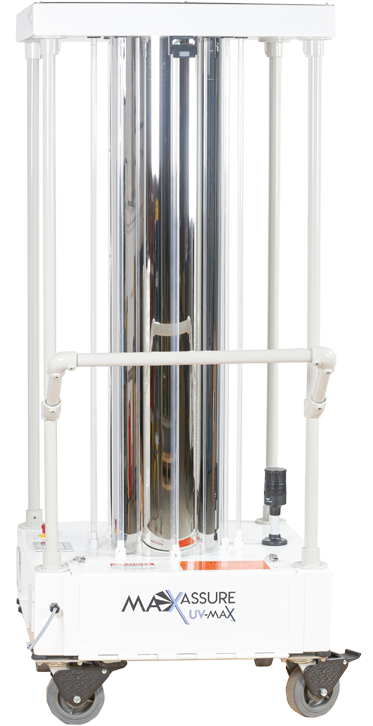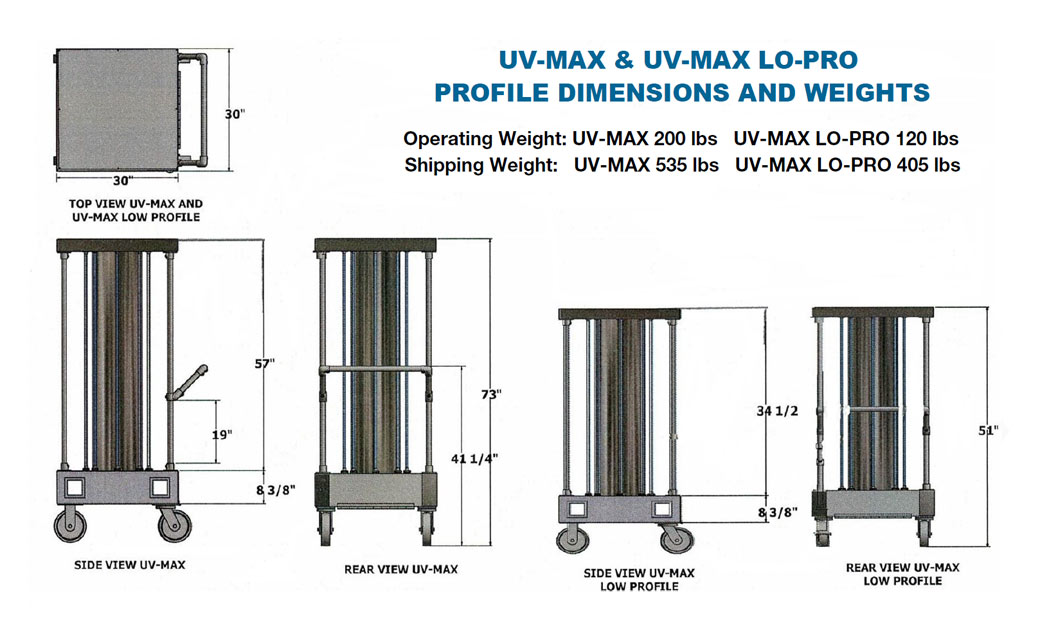PRODUCTS > UV-C SURFACE DISINFECTION
PORTABLE UV-C SURFACE DISINFECTION
UV-MAX: ORIGINAL
The original mobile UV-C disinfection cart, this ultra-rugged model was built for semi-trailer disinfection and to be handled on loading docks. UV-MAX finds its perfect home in large industrial spaces. The 4” user-intuitive color touchscreen allows the operator to make countdown and treatment time changes on demand. An adjustable “in use” audible alarm provides a 3rd layer of safety for the dock/plant worker. PLC controls offer data logging as well the ability for technology add-ons to meet customer needs. UV-MAX, with its ultra-rugged frame, doesn’t shy away from being put through the paces of serious disinfection.
SPECIFICATIONS
LENGTH: 30″ | WIDTH: 30″ | HEIGHT: 73″
OPERATING WEIGHT: 200lbs
SHIPPING WEIGHT: 535lbs
INCLUDED BENEFITS
- Durable industrial grade build
- Redundant safety features
- Consistent results disinfection
- Environmentally friendly
- Reduces human error
- Independent lab-tested efficacy
- Ease of use controls
- UVC – a CDC and EPA approved disinfection method
- Fully assembled – ready to use
SPECIFICATIONS
- (8) 55″ low pressure h.o. lamps
- 480 watts / 6 amps / 120v ac
- 4″ hmi touchscreen controls
- 6″ swivel caster rubber wheels
- 12,000+ run hour lamp life
- 360 deg. treatment distribution
- passive infrared sensor(s) safety
- 254-nm germicidal uvc light
- ul rated controls
99%
EFFICACY RATES IN DESTROYING HARMFUL BACTERIA & VIRUSES
Affordable & Effective Disinfection Solutions for High Traffic Environments
KILLS PATHOGENS
HEALTH FORWARD
SAFE & EFFECTIVE
APPROVED METHODS
SIMPLE & DURABLE
SUPPORT
LAW ENFORCEMENT APPLICATIONS
Solve the toughest problems in commercial disinfection using comprehensive solutions that meet or exceed current CDC disinfection guidelines in a way that is environmentally sustainable, economical, and absent of supply chain interruptions.
Solve the toughest problems in commercial disinfection using comprehensive solutions that meet or exceed current CDC disinfection guidelines in a way that is environmentally sustainable, economical, and absent of supply chain interruptions.














